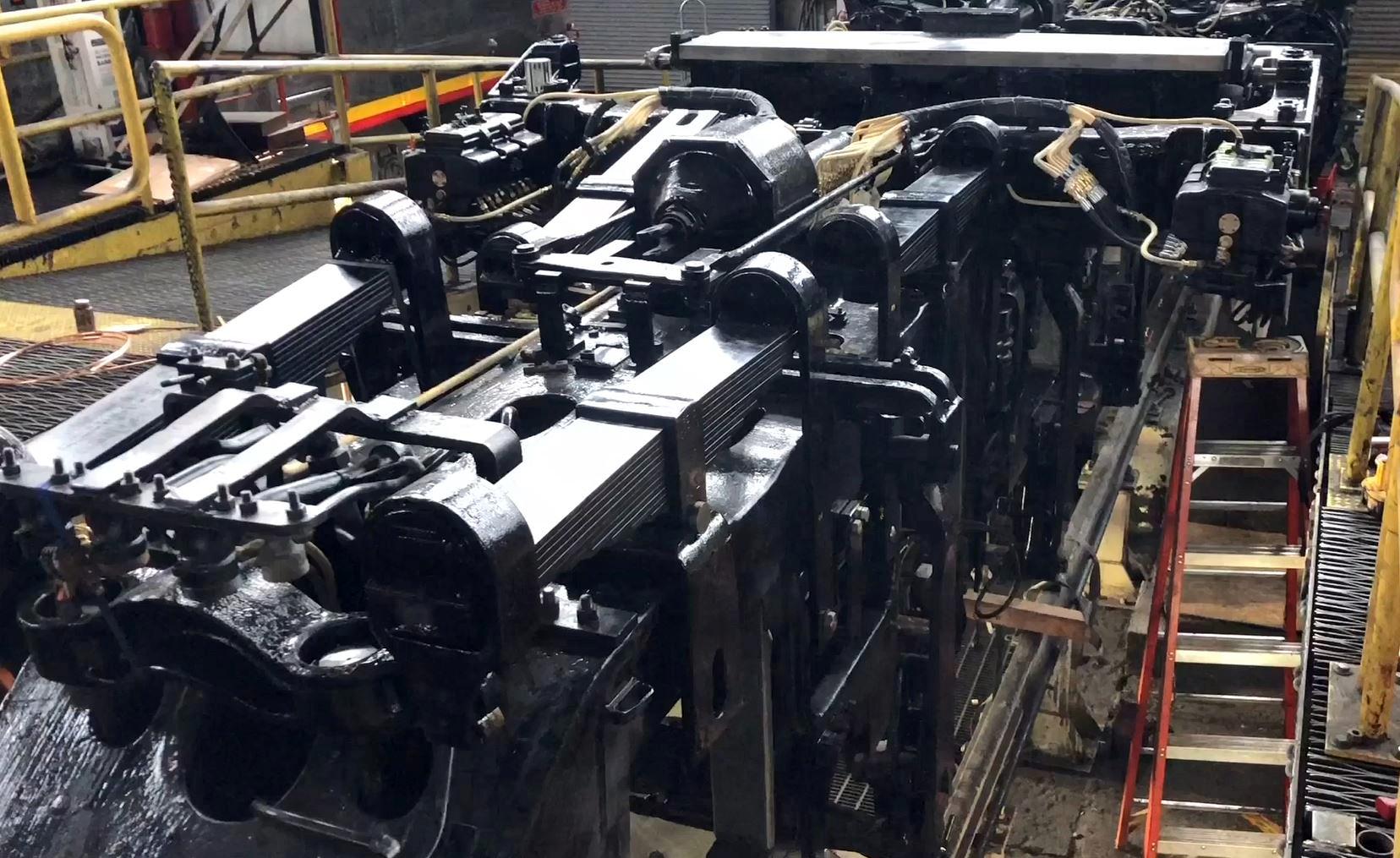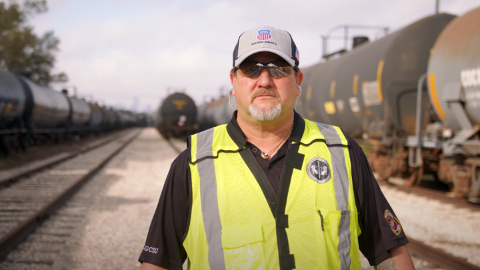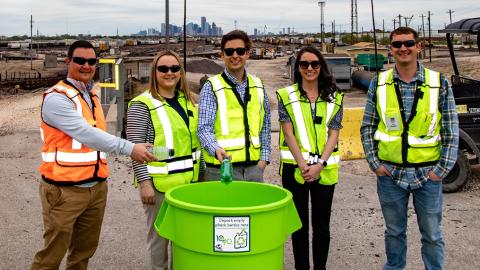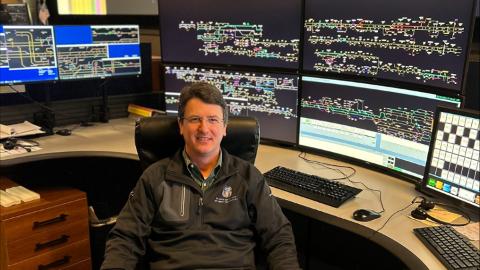With completion of steam giant No. 4014’s massive front engine restoration looming, the UP Steam Team has rebuilt and installed a cushion to cradle all that heavy metal: a brand new coil and leaf-spring suspension system.
Subscribe to Inside Track
Trains and cars both depend on suspension systems to keep the vehicle’s body safe from bumps in the road. “The back wheels of most cars have leaf springs and coil springs,” said Ed Dickens, head of the Union Pacific Steam Team. “If you didn’t have a suspension system your car would bounce, bounce, bounce down the road after you hit a pothole.”
Leaf springs consist of special alloy spring steel metal plates clamped together. The steel plates are joined at the center with a heavy-duty spring buckle. The whole thing rests on spring saddles, giant castings that take the locomotive’s weight and transfer it onto each wheel or driver.
“In between the spring saddle on the bottom of the spring buckle is a pin,” Dickens said. “The leaf springs teeter-totter up and down as necessary to respond to variations in track.”
The teetering movement allows the spring rigging to work as an interconnected system, constantly equalizing the locomotive’s weight in response to the track.
A double set of inner and outer coil springs – called a deadhanger point -- is located at the end of the locomotive frame to help absorb sudden shocks, or unexpected bumps. “The end has to be rigid, so the coil springs work nicely,” Dickens said.
Steam Update: Locomotive No. 4014 Front Engine Walk Along
Ed Dickens, head of the Union Pacific Steam Team, gives an in-depth tour of locomotive No. 4014's nearly completed front engine.
Though railroad tracks are relatively smooth, there always are minor variations along any route. The coil springs can help take the impact of the small dips and rises, minimizing movements that can, over time, reduce the life of the individual components.
All of No. 4014’s new suspension system parts were manufactured to specifications from American Locomotive Company’s (ALCO) 1940s-era designs.
“But parts have been revised, reengineered and redrawn over the years to be more durable,” Dickens said. “The revised drawings indicate all the trial and error built into the system. We made our parts to the latest state-of-the-art drawings. We don’t want to alter their weight or function. We just want to create pieces that last.”
Steam Team Foreman General Austin Barker uses a computer-aided design (CAD) program during the design process. "It allows us to observe how each part moves and interacts with adjacent components," he said. "These drawings are used to create castings for new metal parts."
Next, the team will reassemble the trailing truck -- the two wheels that go under the cab -- and the engine truck -- the front two axles underneath the locomotive’s massive engine. This will mark the completion of restoration work on No. 4014’s front engine.
“The team’s craftsmanship is outstanding,” Dickens said. “We are putting in a lot of hours, and this locomotive will be stunning when we’re done.”






